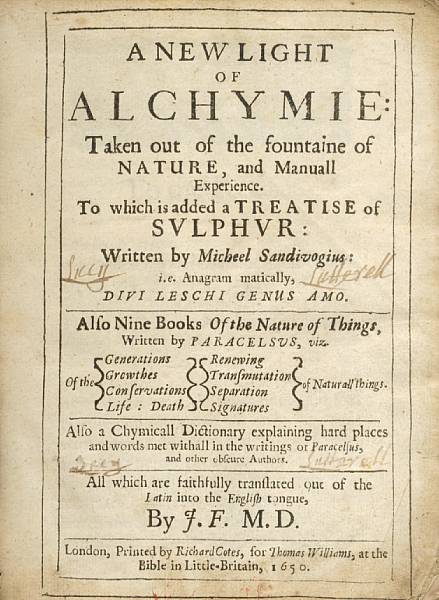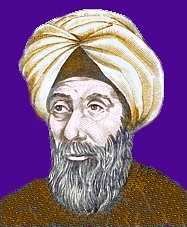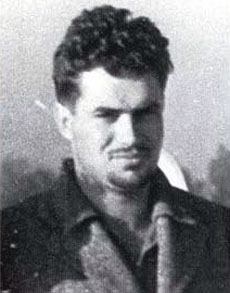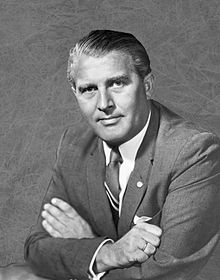
Nothing is New
There is nothing new in the world except the history you do not know. Harry S Truman
Scientifically institutionalised dishonesty and fraud.
There should be a word to define what’s going on on the video below, but I can’t think of one and I don’t think it is confined only to archaeology…
Forbidden Archaeology, Suppressed, New Evidence of Early Man
Deep drilling surprises for scientists: Inner Earth Deep seismic scanning fails to predict what the drilling finds – Seismology fails big-time.
Oxygen and Submarines

Michael Sendivogius (1566 -1636)
The discovery of oxygen is usually attributed to Joseph Priestley (1733-1804), but it was pre recorded by someone who had died before he was born, in a book that was in every major European scientific library during his lifetime. Written by alchemist Michael Sendivogius in 1604 who’s works also tell of his design for a submarine. This was subsequently built by Dutch inventor Cornelis Drebbel (1572 – 1634) by order of James I of England and successfully navigated the River Thames from Westminster to Greenwich, powered by twelve oarsmen. Oxygen for breathing was supplied by a flask of heated saltpeter, the trip being recorded by Robert Boyle (1627 – 1691).
The ‘Works of Sendivogius’ can be found here: http://www.levity.com/alchemy/sendivog.html
http://galileo.rice.edu/Catalog/NewFiles/sendivog.html
More than sixty years later Johann Becher replaced the oxygen theory with the phlogiston theory: “The phlogiston theory, first stated in 1667 by Johann Joachim Becher, is an obsolete scientific theory that postulated the existence of a fire-like element called “phlogiston”, which was contained within combustible bodies and released during combustion. The theory was an attempt to explain processes such as combustion and the rusting of metals, which are now understood as oxidation.” http://en.wikipedia.org/wiki/Phlogiston_theory
theory: “The phlogiston theory, first stated in 1667 by Johann Joachim Becher, is an obsolete scientific theory that postulated the existence of a fire-like element called “phlogiston”, which was contained within combustible bodies and released during combustion. The theory was an attempt to explain processes such as combustion and the rusting of metals, which are now understood as oxidation.” http://en.wikipedia.org/wiki/Phlogiston_theory
Oxygen is rediscovered by Lavoisier? :
“Priestley’s original experiments on “dephlogisticated air” (oxygen), combustion, and water provided Lavoisier with the data he needed to construct much of his system; yet Priestley never accepted Lavoisier’s new theories and continued to defend phlogiston theory for the rest of his life. ..”
http://en.wikipedia.org/wiki/Joseph_Priestley#Chemical_Revolution
See also:
http://www.rexresearch.com/alchemy/newchem.htm
For the works of Sendivogius.
Anaesthetics
“Throughout Europe, Asia, and the Americas a variety of Solanum species containing potent tropane alkaloids were used, such as mandrake, henbane, Datura metel, and Datura inoxia. Ancient Greek and Roman medical texts by Hippocrates, Theophrastus, Aulus Cornelius Celsus, Pedanius Dioscorides, and Pliny the Elder discussed the use of opium and Solanum species.” http://en.wikipedia.org/wiki/Anesthesia
“Early Chinese practitioners used acupuncture (the insertion of thin, solid needles into specific locations on the body) and the smoke of Indian hemp (a tough fibre obtained from the stems of a tall plant) to dull a person’s awareness of pain. Ancient Hindu (East Indian) civilizations used henbane (a plant) and wine as well as hemp. In the first century the Greek physician Dioscorides ( A.D. 40-90) described the use of wine made from mandragora (a plant known as mandrake) to produce a deep sleep in patients undergoing surgery. Dioscorides used the Greek word “anesthesia” to describe this sleep. And the Greek poet Homer (author of the Illiad and the Odyssey) referred to the pain-killing effects of the potion nepenthe….Seeds of the opium poppy have been found in prehistoric Swiss lake dwellings and in Egyptian ruins.”
http://www.discoveriesinmedicine.com/A-An/Anesthetics.html#ixzz1HoJJDXHu http://www.discoveriesinmedicine.com/A-An/Anesthetics.html#ixzz1HoIunMSr
“Theodoric Borgognoni (1205-1298), also known as Teodorico de’Borgognoni, and Theodoric of Lucca, was an Italian who became one of the most significant surgeons of the medieval period. A Dominican friar and Bishop of Cervia, Borgognoni is considered responsible for introducing and promoting important medical advances including basic antiseptic practice in surgery and the use of anaesthetics.” http://en.wikipedia.org/wiki/Theodoric_Borgognoni
Paracelsus (Alchemist) and Anaesthesia in 1275
“We can wonder how Paracelsus writings on ansthesia using sweet vitriol (ether) could be ignored for centuries, until finally being followed up 1846. We can readily believe that he was in some ways 400 years ahead of him time but was he, perhaps, even more advanced than that?”
http://www.forteantimes.com/features/articles/248/paracelsus_the_mercurial_mage.html
http://www.general-anaesthesia.com/people/paracelsus.html
Sweet Vitriol and Laughing Gas “In 1275, Spanish physician (Alchemist) Raymond Lullus, (Better known as Raymond Lully,) while experimenting with chemicals, made a volatile, flammable liquid he called sweet vitriol. In the 16th century, a Swiss-born physician (and alchemist) commonly known as Paracelsus made chickens breathe sweet vitriol and noted that they not only fell asleep but also felt no pain. Like Lullus before him, he did not experiment on humans. In 1730, German chemist Frobenius gave this liquid its present name, ether, which is Greek for “heavenly.” But 112 more years would pass before ether’s anesthetic powers were fully appreciated.”
http://www.jlrmedicalgroup.com/agony.htm
http://en.wikipedia.org/wiki/Ramon_Llull
Microwave Oven
The microwave oven was discovered by self taught engineer and inventor Percy Spencer in 1945. Spencer, from Howland, Maine, was building microwave magnetrons for radar sets with the American company Raytheon when he found that the chocolate bar in his pocket had melted. He experimented further with the microwaves on popcorn and an egg, which exploded.
A metal box fitted with a microwave source proved to be an ideal cooker and the microwave oven was born.
His title, Dr. Spencer was as a result of an honorary doctorate rather than a formal education: “Dr. Spencer was awarded an honorary Doctor of Science degree by the University of Massachusetts and by Nasson College in Maine. He also held an honorary degree from the University of Maine. He was a fellow of the American Academy of the Institute of Electrical and Electronics Engineers.” New York Times, September 8, 1970 (p. 35) http://www.foodtimeline.org/food2.html
Again, as throughout these pages we find useful technology that has no provenance with academia, invented by an uneducated but imaginative thinker.
Superconductor
The first practical use of an already existing technology.
“On March 21, 1900, Nikola Tesla was granted a US patent for the means for increasing the intensity of electrical oscillations by lowering temperature, which was caused by lowered resistance, a phenomenon previously observed by Olszewski and Wroblewski. Within this patent it describes the increase intensity and duration of electric oscillations of a low temperature resonating circuit. It is believed that Tesla had intended that Linde’s machine would be used to attain the cooling agents.”
http://en.wikipedia.org/wiki/History_of_superconductivity
US patent Number: 0685012 “Now I have discovered that when a circuit adapted to vibrate freely is maintained at a low temperature the oscillations excited in the same are to an extraordinary degree magnified and prolonged, and I am thus enabled to produce many valuable results which have heretofore been wholly impracticable.
Briefly stated, then, my invention consists in producing a great increase in the intensity and duration of the oscillations excited in a freely-vibrating or resonating circuit by maintaining the same at a low temperature.”
http://www.tfcbooks.com/patents/0685012.htm
“James Dewar (inventor of the thermos flask) initiated research into electrical resistance at low-temperatures. Zygmunt Florenty Wroblewski conducted research into the electrical properties at low temperatures, though his research ended early due to his accidental death. Around 1864, Karol Olszewski and Wroblewski predicted the electrical phenomena in ultra-cold temperatures of dropping resistance levels. Olszewski and Wroblewski documented evidence of this in the 1880s.
Dewar and John Ambrose Fleming predicted that at absolute zero, pure metals would become perfect electromagnetic conductors (though, later, Dewar altered his opinion on the disappearance of resistance believing that there would always be some resistance). Walther Hermann Nernst developed the third law of thermodynamics and stated that absolute zero was unattainable.”
http://en.wikipedia.org/wiki/History_of_superconductivity
Often in these pages we find the claim of an invention sometimes followed by a Nobel prize by a physicist when it was only a development of a pre-existing idea and /inventors.about.com tell us: “The original superconductor was invented in 1911 by Dutch physicist, Heike Kammerlingh Onnes, when these superconductors are cooled, they act as perfect conductors with no resistance. Onnes experimented with mercury, tin, and lead… Onnes was awarded the Nobel Prize in Physics in 1913 for this work. ”
http://inventors.about.com/od/sstartinventions/a/superconductors.htm
“The original superconductor” cannot have been invented in 1911 because Nikola Tesla was using one that he had patented in 1900 and as always we have a revised history that favours academic science.
There is an argument by a debunker with Wiki at the following link:
“U.S. Patent 685,012. The The patent office classifies the patent as superconductivity technolgy, specifically “Dynamoelectric; liquid coolant””
http://en.wikipedia.org/wiki/Talk%3AList_of_Tesla_patents#Removal_of_references_-_superconductivity
Heat and Radioactivity
“Thirty years ago, Otto Reifenschweiler was searching for a compound which could protect Geiger-Mueller tubes from damage when they are first ionised. He found the compound, which became a money-spinner for Philips, in a mixture of titanium and radioactive tritium. He also discovered that as the mixture was heated, its radioactivity declined sharply. No process known to physics could account for such a baffling phenomenon: radioactivity should be unaffected by heat. Nevertheless, as the temperature increased from 115C to 160C, the emission of beta particles fell by 28%.” http://www.science-frontiers.com/sf092/sf092c14.htm
Half-lives or decay constants are the basis of radiometric dating and as the name suggests they are supposed to be constant. They are used to date the rocks of Earth and the Moon, but we have more evidence elseware that they vary with the seasons of the year. Science knows all about this but is loth to spoil a good story about rock ages.
The Wiki wimps tell us that: “Radiometric dating (often called radioactive dating) is a technique used to date materials such as rocks or carbon, usually based on a comparison between the observed abundance of a naturally occurring radioactive isotope and its decay products, using known decay rates.[1] The use of radiometric dating was first published in 1907 by Bertram Boltwood[2] and is now the principal source of information about the absolute age of rocks and other geological features, including the age of the Earth itself, and can be used to date a wide range of natural and man-made materials.” https://en.wikipedia.org/wiki/Radiometric_dating
Reifenschweiler, O., Cold Fusion and Decrease of Tritium Radioactivity, in LENR-CANR.org. 2003. Cold Fusion and Decrease of Tritium Radioactivity
Cached PDF
Earliest optical Telescope or was it known BCE?
The optical astronomical telescope is another example of academic astronomers taking possession of a technology that has been around since the dawn of time.
Optics was known and used by the earliest civilisations. This is often called physics by scientists, while the physics of the ancients is often referred to simultaneously as a joke by modern science. This is of course in support of the scientific paradigm that says that there was a linear increase in knowledge when there was no such thing.
 Alhazen (965 c.1040)
Alhazen (965 c.1040)
“Ibn al-Haytham (or Alhazen) proved that rays of light travel in straight lines, and carried out various experiments with lenses, mirrors, refraction, and reflection. He was also the first to reduce reflected and refracted light rays into vertical and horizontal components, which was a fundamental development in geometric optics. He proposed a causal model for the refraction of light that could have been extended to yield a result similar to Snell’s law of sines, however Alhazen did not develop his model sufficiently to attain that result.”
Wiki excells itself: “Although named after Dutch astronomer Willebrord Snellius (1580–1626), the law was first accurately described by the scientist Ibn Sahl at the Baghdad court in 984. In the manuscript On Burning Mirrors and Lenses, Sahl used the law to derive lens shapes that focus light with no geometric aberrations.” https://en.wikipedia.org/wiki/Snell’s_law
“Ibn al-Haytham also gave the first clear description and correct analysis of the camera obscura and pinhole camera. While Aristotle, Theon of Alexandria, Al-Kindi (Alkindus) and Chinese philosopher Mozi had earlier described the effects of a single light passing through a pinhole, none of them suggested that what is being projected onto the screen is an image of everything on the other side of the aperture. Ibn al-Haytham was the first to demonstrate this with his lamp experiment where several different light sources are arranged across a large area. He was thus the first to successfully project an entire image from outdoors onto a screen indoors with the camera obscura…He also made investigations into refraction, catoptrics, dioptrics, spherical mirrors, and magnifying lenses” http://en.wikipedia.org/wiki/Alhazen#Book_of_Optics
Lots of al-Haytham stuff here: http://www.newworldencyclopedia.org/entry/Ibn_al-Haytham
“In the 10th century, Ibn Sahl used what is now known as Snell’s law to calculate the shape of lenses.”: http://en.wikipedia.org/wiki/Lens_%28optics%29#History
http://en.wikipedia.org/wiki/Ibn_Sahl
Marshall, O. S. (1950), “Alhazen and the Telescope”, Astronomical Society of the Pacific.
Timeline of telescope technology
http://en.wikipedia.org/wiki/Timeline_of_telescope_technology
Lenses, Eye Glasses
“The earliest historical reference to magnification dates back to ancient Egyptian hieroglyphs in the 5th century BC, which depict “simple glass meniscal lenses”. The earliest written record of magnification dates back to the 1st century AD, when Seneca the Younger, a tutor of Emperor Nero of Rome, wrote: “Letters, however small and indistinct, are seen enlarged and more clearly through a globe or glass filled with water”. Nero (reigned 54 to 68 AD) is also said to have watched the gladiatorial games using an emerald as a corrective lens… “
“Corrective lenses were said to be used by Abbas Ibn Firnas in the 9th century, who had devised a way to produce very clear glass. These glasses could be shaped and polished into round rocks used for viewing and were known as reading stones. The earliest evidence of “a magnifying device, a convex lens forming a magnified image,” dates back to the Book of Optics published by Alhazen in 1021. Its translation into Latin from Arabic in the 12th century was instrumental to the invention of eyeglasses in 13th century Italy.”
“…Englishman Robert Grosseteste’s treatise De iride (“On the Rainbow”), written between 1220 and 1235, mentions using optics to “read the smallest letters at incredible distances”. A few years later, Roger Bacon is also known to have written on the magnifying properties of lenses in 1262.” http://en.wikipedia.org/wiki/Glasses#History
Prism
Although it was Isaac Newton who seems to have been the first to suggest that the colours from a prism are components of white light, the prism itself is so old that no one knows its origin.
Did Vikings navigate by polarized light?
Nature 31 Jan 2011 Jo Marchant
“A Viking legend tells of a glowing ‘sunstone’ that, when held up to the sky, revealed the position of the Sun even on a cloudy day. It sounds like magic, but scientists measuring the properties of light in the sky say that polarizing crystals which function in the same way as the mythical sunstone could have helped ancient sailors to cross the northern Atlantic. A review of their evidence is published today in Philosophical Transactions of the Royal Society.” http://www.freerepublic.com/focus/chat/2666520/posts

Jack Parsons
“Occultist and Aleister Crowley acolyte,…Jack Parsons was a founding member of Jet Propulsion Laboratories (JPL) back in the late 1930’s, and one time head of the California branch of the magical order the Agape Lodge of the Ordo Templi Orientalis (O.T.O.). Parson’s infamous reputation was fueled by several nefarious undertakings and associations, notwithstanding his alliance with the self-proclaimed “Wickedest Man Alive!”–Aleister Crowley–who directed O.T.O. operations from his base in England. This group’s contribution to the war effort–as Carter points out–cannot be overlooked; nor can their early efforts in rocket engineering, which provided much of the impetus for later NASA projects in the late 50’s and 60’s, and the eventual landing of men on the moon.”
http://www.theforbiddenknowledge.com/hardtruth/sex_and_rockets.htm
Parsons was not a scientist, but having made the most significant contribution to both the design and building of the first US military rockets, he was criticised by his scientist manager for sloppy science and having the attributes of an inventor? Nothing changes!
It must be remembered when reading or researching Parsons and his association with Alistair Crowley, that ‘the occult’ connection has nothing to do with Satanism as many writers seem to assume. Neither Parsons or Crowley was a Satanist and Crowley was given the appellation by the press, although he did use the publicity for his own purposes. Satanism is a kind of reversed judeo-christian religion that has no history before Christ BC, and it is not commonly used in occultism.

“Werner von Braun claimed it was the self-taught Parsons, not himself, who was the true father of the American space program for his contribution to the development of solid rocket fuel. Although Parsons has been memorialised with a statue at JPL and has had a crater on the dark side of the moon named in his honour, his story remains shrouded in mystery, for what is little known about this legend of aerospace engineering is that Parsons was an avid practitioner of the occult sciences, and for several years, Aleister Crowley’s hand-picked leader of the US branch of the Ordo Templi Orientis, the Southern California-based Agape? Lodge.”
An interesting book review: Jack Parsons was one of the principal founders of both the Jet Propulsion Laboratory (JPL) and the Aerojet Engineering Corporation. He invented the first rocket engine to use a castable, composite rocket propellant,[1] and pioneered the advancement of both liquid-fuel and solid-fuel rockets.”
Sex and Rockets: The Occult World of Jack Parsons By John Carter (Feral House, 1999)
http://old.disinfo.com/archive/pages/article/id592/pg1/index.html
http://en.wikipedia.org/wiki/John_Whiteside_Parsons
http://www.forteantimes.com/features/profiles/507/john_whiteside_parsons.html

Philo Taylor Farnsworth TV and fusion
“…Farnsworth, who also invented a nuclear fusion device later in his career, predicted HDTV and solid-state flat-screen technology in a 1957 interview: “[W]e think we can eventually get in excess of 2000 lines instead of 525 and do it on an even narrower channel which will make for a much sharper picture. We believe in the picture-frame type of a picture, where the visual display will be just a screen. And we hope for a memory, so that the picture will be just as though its pasted on there.”
See: http://nationalvanguard.org/2010/11/philo-farnsworth-almost-forgotten-http://en.wikipedia.org/wiki/Philo_Farnsworth
Phosphorus
“Hennig Brand(t) (c. 1630 c. 1710) was a merchant and alchemist in Hamburg, Germany. He discovered phosphorus around 1669.”
http://en.wikipedia.org/wiki/Hennig_Brand#Alchemy
Inoculation
“The origin of inoculation in China is somewhat cloudy. It is known that the technique originated in the southern province of Szechuan. South west in this province is a famous mountain named O-Mei Shan, known for its association with both Buddhism and the Chinese religion Taoism. The taoist alchemists who lived as eremits ( does he mean hermits?) in the caves of this mountain are are said to have known the secret of inoculation as early as the tenth century B.C. How much earlier they knew about it is unknown, but the first written record of vaccination. The Correct Treatment of Smallpox, is attributed to a Buddhist nun practicing during the 11th century.” http://www.whonamedit.com/doctor.cfm/1818.html
“Edward Anthony Jenner (17 May 1749 26 January 1823) was an English scientist who studied his natural surroundings in Berkeley, Gloucestershire. Jenner is widely credited as the pioneer of smallpox vaccine, and is sometimes referred to as the “Father of Immunology”; his works have been said to have “saved more lives than the work of any other man””
http://en.wikipedia.org/wiki/Edward_Jenner
Jenner, himself a country dweller, heard from the local milkmaids that they were sure that if they had contracted cowpox they would not be infected by smallpox and this was the basis of his inoculation.
Arsenic and Photography Albertus Magnus, Alchemist (1206 – 1280)
“He is credited with the discovery of the element arsenic and experimented with photosensitive chemicals, including silver nitrate.” http://en.wikipedia.org/wiki/Albertus_Magnus
Cars and History
Although not strictly science, but sometimes labelled as being science, the automotive industry is not absent from the ‘Nothing New’ Hall of Fame.
The car salesman tells us confidently that this years model is so much more advanced than was last years. What most people fail to understand or even believe, is that the technology is not new, much of it dating to the beginning of the last century. Most improvements are cosmetic with such things as engine, gearbox, clutch, brakes and transmission being no different in principle than they were in 1910.
See also: ‘Nothing New’: 7 modern car technologies that are actually 100 years old
http://blog.hemmings.com/index.php/2011/01/18/nothing-new-7-modern-car-technologies-actually-100-years-old/
“1920s cars saw many technical advances that improved the functions of the automobile. Many of the automobile innovations that we assume of as being modern were in fact introduced in (or before) the 1920’s. For example, electric powered cars, front wheel drive, four wheel drive, and even hybrid fuel/electric cars.” http://www.anythingaboutcars.com/1920scars.html
Electric Vehicles
“The first electric vehicles were developed more or less hand in hand with the first oil powered vehicles. Indeed, the first fleet of electric taxis were introduced in New York in 1897, while the first gasoline-electric hybrid car was launched by Chicagos Wood Motor company in 1917.”
Read more: http://www.theengineer.co.uk/opinion/comment/nothing-new-under-the-sun/1001526.article#ixzz1Jdip0Ak9
Did the ancients think that the Earth was flat?:
“Eratosthenes (276 BC 195 BC) concluded that, since the angular deviation of the sun from the vertical direction at Alexandria was also the angle of the subtended arc, the linear distance between Alexandria and Syene was 1/50 of the circumference of the Earth which thus must be 505000 = 250,000 stadia or probably 25,000 geographical miles. The circumference of the Earth is 24,902 miles (40,075.16 km).
The great Indian mathematician Aryabhata (AD 476 – 550) was a pioneer of mathematical astronomy. He describes the earth as being spherical and that it rotates on its axis… The discovery that the earth rotates on its own axis from west to east is described in Aryabhatiya. For example he explained the apparent motion of heavenly bodies is only an illusion…
…Aryabhatiya also estimates the circumference of Earth, accurate to 1% which is remarkable. Aryabhata gives the radius of planets in terms of the Earth-Sun distance as essentially their periods of rotation around the Sun. He also gave the correct explanation of lunar and solar eclipses and that the Moon shines by reflecting sunlight” http://en.wikipedia.org/wiki/History_of_geodesy
“Members of the Historical Association in 1945 stated that: The idea that educated men at the time of Columbus believed that the earth was flat, and that this belief was one of the obstacles to be overcome by Columbus before he could get his project sanctioned, remains one of the hardiest errors in teaching.”
http://en.wikipedia.org/wiki/Myth_of_the_Flat_Earth
Sonar, underwater sound propagation and detection.
“Although some animals (dolphins and bats) have used sound for communication and object detection for millions of years, use by humans in the water is initially recorded by Leonardo Da Vinci in 1490: a tube inserted into the water was said to be used to detect vessels by placing an ear to the tube. In the 19th century an underwater bell was used as an ancillary to lighthouses to provide warning of hazards.” http://en.wikipedia.org/wiki/Sonar
Space flight and satellites
The idea of a satellite was first postulated Konstantin Tsiolkovsky (1857-1935). In 1903 he published an academic paper entitled: ” Means of Reaction Devices.” In this he proposed the idea of a multi-stage rocket using liquid hydrogen and oxygen being used to launch the satellite into orbit as well as calculating the orbital speed required to maintain orbit as 8 km/s.
First concept of a space station This occurred in 1928 when the Slovenian scientist, Herman Potocnik (1892-1929) published a book entitled: “The Problem of Space Travel – The Rocket Motor.” In this he devised a scheme for establishing a permanent human presence in space. He developed the concept for the space station in some detail and calculated its geostationary orbit. He then went on to describe the use of orbiting spacecraft for observation of the ground for both commercial and military applications.
First detailed concept of geostationary communications satellites This appeared in an article in 1945 in a British magazine entitled Wireless World. Although written by the famous English science fiction writer Arthur C. Clarke (1917-2008) it postulated the concept of communications satellites to be used for mass communications. Clarke investigated many aspects of the system from the satellite launch, possible orbits and other aspects of the creation of a network of world-circling satellites. He also correctly suggested that just three geostationary satellites would provide coverage over the entire planet. Unfortunately he did not realise quite how much the system would be used, and that many more satellites would be required to cater for the huge volume of data.
http://www.radio-electronics.com/info/satellite/satellite_facts/satellite_facts.php
Markandeya Purana Gravity before Isaac Newton
“Two thousand years before Pythagoras, philosophers in northern India had understood that gravitation held the solar system together, and that therefore the sun, the most massive object, had to be at its centre.” “Twenty-four centuries before Isaac Newton, the Hindu Rig-Veda asserted that gravitation held the universe together. The Sanskrit speaking Aryans subscribed to the idea of a spherical earth in an era when the Greeks believed in a flat one. It is quite remarkable that the Markandeya Purana (54.12) speaks of Earth as being flattened at the poles and bulging at the equator, that is, not perfectly spherical.
http://www.hinduwisdom.info/Advanced_Concepts.h…